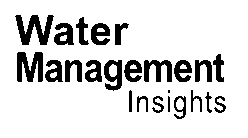The Scottish Environment Protection Agency (SEPA) has issued a stark warning: despite recent rainfall, several northern river catchments are under sustained pressure, with the River Helmsdale in Sutherland now at Significant Water Scarcity. This alarming development, highlighted in SEPA’s latest Water Scarcity Report, underscores the urgent need for proactive water management and the importance of science-led decision-making in the water, sanitation, and drainage sector.
SEPA’s Drought Risk Assessment Tool (DRAT) has been instrumental in tracking these environmental conditions. By analyzing current river flow data from hundreds of sites across Scotland, SEPA can identify areas at risk and take preventive measures to protect rivers, lochs, and their ecosystems. The River Helmsdale’s plight serves as a stark reminder of the potential consequences of sustained low flows. The river has remained below the Q95 threshold—a benchmark indicating the lowest 5% of flows over a 30-year period—for 30 consecutive days, signaling significant scarcity.
While no immediate regulatory action is required in the Helmsdale catchment, as all licensed abstractions return water to the river, the situation in the River Wick catchment in Caithness is equally concerning. SEPA anticipates that this catchment will reach significant scarcity early next week and is already engaging with abstractors to prepare for potential regulatory action to restrict water use.
Eilidh Johnston, SEPA’s Senior Manager in Water Industry and Rural Economy, emphasized the critical role of science in this process. “This is why our science matters,” Johnston stated. “Even with the rain we’ve had over the last few weeks, the science shows real pressure on some rivers.” SEPA’s approach involves gathering current flow data and comparing it against a 30-year baseline, enabling the agency to assess risks, guide actions, and collaborate with stakeholders before serious harm occurs.
The implications of this news for the water, sanitation, and drainage sector are profound. It highlights the necessity of robust monitoring systems and the importance of engaging with water users across various industries. From farmers and distilleries to golf courses and fisheries, all stakeholders must recognize their role in preserving water resources. SEPA’s proactive engagement with representative bodies such as the Scotch Whisky Association, Scottish Golf, NFUS, and Fisheries Management Scotland demonstrates a collaborative approach that could serve as a model for other regions facing similar challenges.
This development also sparks a crucial debate on the balance between water use and environmental protection. As climate change continues to affect weather patterns, the risk of water scarcity will likely increase. The sector must innovate and adapt, investing in technologies and practices that promote sustainable water use. This includes improving water efficiency, enhancing data collection and analysis, and fostering a culture of responsible water stewardship.
The River Helmsdale’s situation is a wake-up call for the entire sector. It underscores the need for vigilant monitoring, proactive management, and collaborative efforts to safeguard our water resources. As SEPA continues to engage with stakeholders and implement regulatory measures, the hope is that this crisis will serve as a catalyst for long-term change and a more resilient water management strategy. The sector must rise to this challenge, embracing science-led approaches and fostering a collective commitment to protecting our precious water ecosystems.
